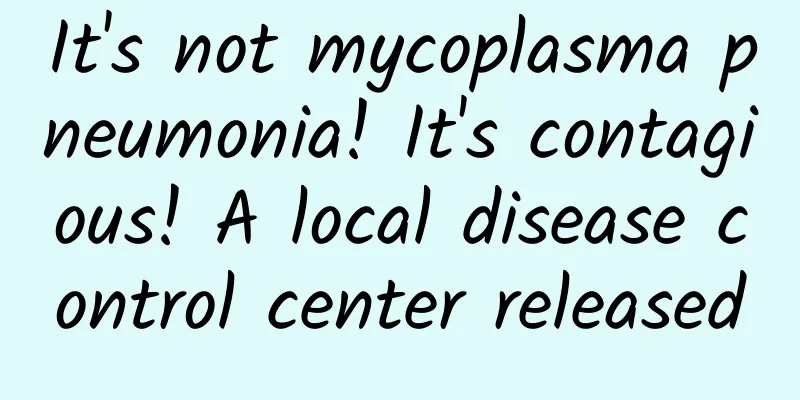It's not mycoplasma pneumonia! It's contagious! A local disease control center released

|
The topic "Recent children's fever may be due to infection with Coxsackie virus" became a hot search. Many parents are confused: What kind of virus is this? Is it contagious? How to prevent it? Coxsackievirus is not new You may find it unfamiliar when you hear the name, but it is actually not a new virus. Hand, foot and mouth disease, herpetic pharyngitis, and childhood gastrointestinal cold , these common childhood diseases are actually related to Coxsackievirus. Coxsackievirus belongs to the Picornaviridae family and the Enterovirus genus, and is divided into two major categories: Group A and Group B. Group A viruses have 24 serotypes, A1 to A24; Group B viruses have 6 serotypes, B1 to B6. There is very little cross-immunity between different virus groups and types. Coxsackievirus was first discovered in stool samples in 1948 by Dr. Gillbert Dalldorf and his colleagues while searching for a cure for polio and was named after the town of Coxsackie in New York where it was discovered. Human infection with Coxsackievirus can easily cause changes such as herpetic pharyngitis and non-paralytic poliomyelitis. The clinical manifestations are complex and diverse, including aseptic meningitis, encephalitis, myocarditis, pericarditis, epidemic chest pain, herpetic pharyngitis, etc. Some conditions are similar to poliomyelitis. After infection, people will have cold symptoms such as fever, sneezing, and coughing . Infection during pregnancy can cause non-paralytic poliomyelitis and intrauterine infection and malformation of the fetus. Coxsackievirus can cause meningitis and mild paralysis, pleural pain, intercostal pain, herpetic pharyngitis, respiratory diseases, conjunctivitis, and hand, foot and mouth disease. Is Coxsackievirus contagious? meeting. Coxsackievirus is mainly transmitted through the digestive and respiratory tracts , and can also be transmitted through direct contact between people or indirect contact with food, clothing, and utensils contaminated by the virus. Pollution of drinking water and swimming pools can cause outbreaks, and clams in seawater or rivers can also carry the virus, leading to foodborne outbreaks. Pregnant women who are infected can transmit the virus to the fetus through the placenta, causing fetal malformations or even stillbirth. Children are more susceptible than adults. It often occurs in children under 15 years old, and the majority of cases occur in children under 5 years old, mainly in scattered households and children in childcare institutions. Immunity increases with age. Adults who are infected often show subclinical or latent infections, while pregnant women and the elderly are susceptible to infection and have a higher incidence of complications. Neutralizing antibodies produced after coxsackievirus infection can be transmitted to the fetus through the placenta, so newborns within 6 months rarely get sick. How to prevent Coxsackievirus? There is no specific treatment for Coxsackie virus infection, and symptomatic treatment is the main treatment. We remind everyone to take precautions. Prevention focuses on cutting off the transmission route. Digestive and respiratory isolation measures should be taken for people infected with Coxsackie virus. During the epidemic, attention should be paid to environmental sanitation and personal hygiene, and good personal hygiene habits should be developed. Food and water hygiene should be strengthened, and feces management should be done well. Medical staff in hospitals and clinics should do a good job of hand hygiene, and medical equipment and wards should be disinfected at any time and terminally to prevent hospital infection. There is currently no vaccine available. Some parents are confused. Isn’t it said that hand, foot and mouth disease can be treated with vaccination? A: Children over 6 months old can be vaccinated with EV71 vaccine, which can effectively prevent the onset, severe illness and death of EV71-related hand, foot and mouth disease. However, this vaccine cannot prevent hand, foot and mouth disease caused by other types of viruses such as Coxsackie A16 and Coxsackie A6. Therefore, parents should not rest easy and take protection lightly just because they have been vaccinated. Source: People's Daily Online Science Popularization Comprehensive Future Network, Jiangsu Disease Control Center |
<<: The harm of acute myocardial infarction and its nursing methods
>>: Preventing congenital disabilities and safeguarding a better future
Recommend
Early pregnancy weak positive 2 days every other day white board
The early pregnancy test paper shows weak positiv...
Reasons for sudden delay of menstruation
Sudden delay of menstruation is very common. Many...
How long after giving birth can I swim?
Almost every woman will experience getting marrie...
What food should women eat to supplement their sexual frigidity
The strength of sexual desire determines the degr...
Can a girl still grow taller at 18?
Many parents are worried about whether their chil...
"Can you cure it by taking it at home?" Is azithromycin really that magical?
Review expert: Gu Haitong, deputy chief physician...
What to do if chest expansion occurs?
Perhaps many people do not know what outward ches...
What are the fitness and weight loss methods for women?
For women, a slim figure is very important. It is...
The harm of women crossing their legs
What are the dangers of women crossing their legs...
Why do women have a bad smell down there?
I think everyone knows that normal female vaginal...
Where is the ai ai patch for breast hyperplasia
The navel is a key position on the body, a positi...
Why do women experience urethral pain when urinating?
Whether male or female, urethral stinging often o...
What to do if menstruation is delayed and the lower abdomen is swollen
Menstruation is a normal physiological reaction o...
One word difference, almost used wrong! This "panacea" that every household must have, most people don't use it correctly
Erythromycin eye ointment and erythromycin ointme...
What are the benefits of drinking red wine every day for women
Many friends like to drink a little wine when the...









